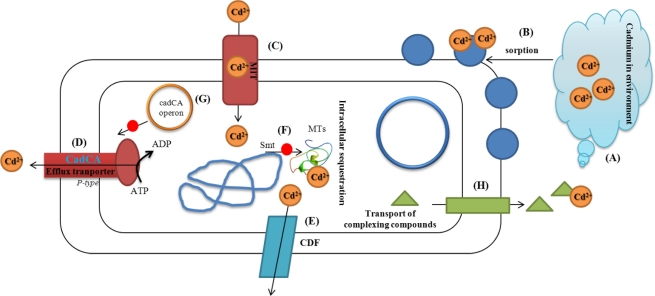Figure 1.
Overview of bacteria cadmium interaction. (A) Cd(II) ions occur in environment (soil, water, biota); (B) Sorption of Cd(II) on the surface of bacterial wall (protein, cyrbohydrates); (C) ion transporter (metal transporting system—MIT, which enable Cd(II) to enter cell; (D) Efflux transporter: CadCA protein, which is a P-type ATPase; (E) Slow efflux is catalysed by cation-diffusion facilitator CDF; (F) Intracellular sequestration: Smt metallothionein locus on bacterial chromosome transcript and translate metallothionein, which binds Cd(II) and, thus, protects a cells against adverse effects of these ions; (G) cadCA cadmium resistance operon in Staphylococcus aureus on plasmid transcript and translate CadCA (D). (G) Export of chelating compounds (organic acids), which interact with Cd(II) ions directly in outer space to form complexes, which can not enter the cell. Scheme was adopted and modified according to the following papers [11,13,19].

